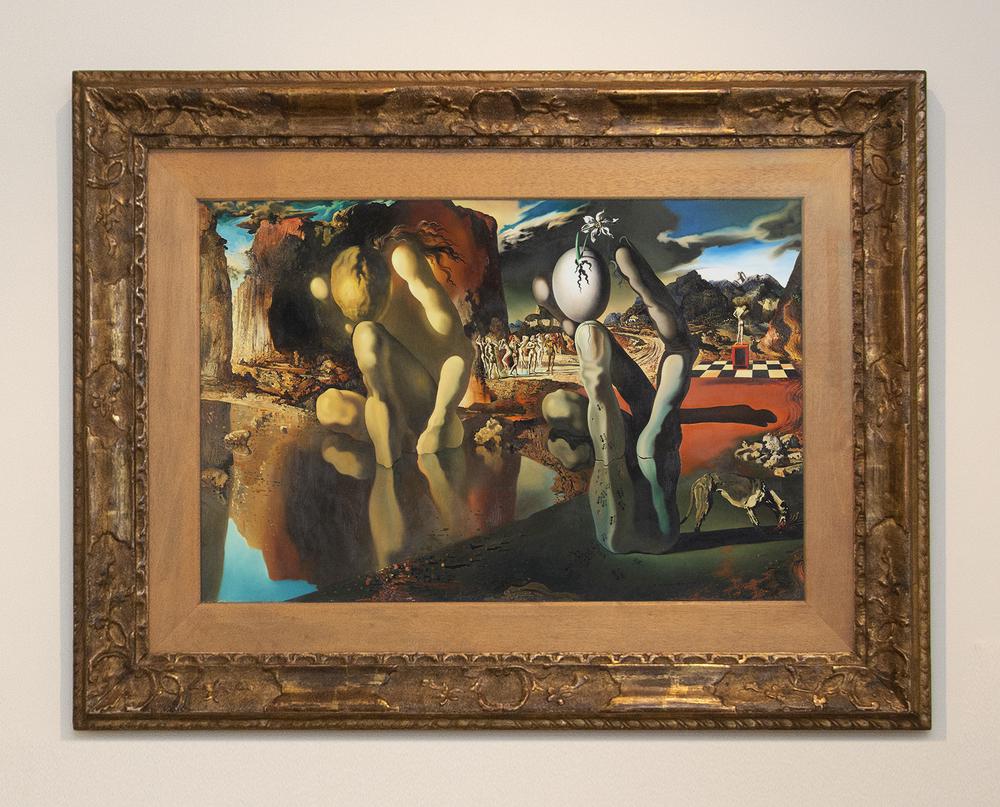
Metamorphosis of Narcissus
Dalí intended Metamorphosis of Narcissus to be accompanied by his poem of the same name, explaining its imagery and offering a personal interpretation of the myth. The poem ends with an allusion to Dalí’s wife Gala as his narcissus.
The landscape in the painting is dominated by two large forms in the foreground: on the left, the figure of Narcissus, head bowed, limbs reflected in the water, and on the right a bony hand holding an egg from which a solitary narcissus blooms.
The landscape draws on both the familiar terrain of the rocky cliffs of Dalí’s Catalan home and the mountains in Austria where he painted the picture in the Spring of 1937. The poem begins with the melting of the god of the snow, who is just visible behind the mountains in the painting, as an echo of the bowed head/egg. At this season, narcissi were beginning to flower.
In the middle ground is a circle of figures Dalí identified as the ‘heterosexual group’. Although given specific ethnic and national identities in the poem, their primary function is as a foil to Narcissus, who has rejected all their advances.
Installation shot, Freud Museum London, 2019 “Metamorphosis of Narcissus”, 1937 © Salvador Dalí, Fundació Gala-Salvador Dalí, DACS 2018